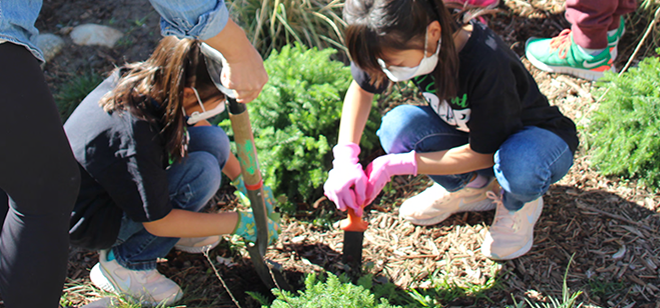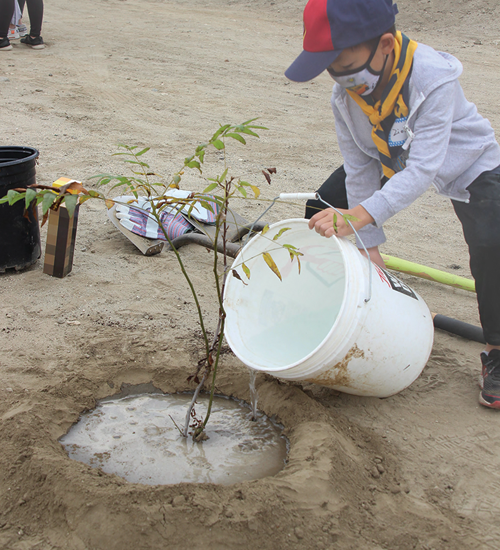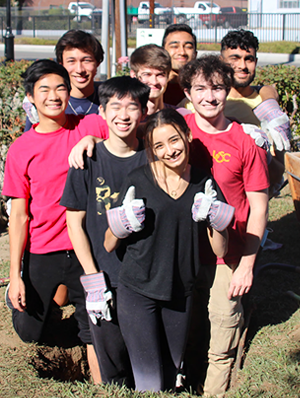Bringing Nature to Campus

Many Students in Los Angeles are expressing a new feeling they refer to as ‘climate anxiety’ in response to concerns about how humans are negatively impacting the environment. Every year there are an increasing number of extreme heat days that affect public‐school campuses. Asphalt and lack of trees on campuses create urban heat islands that slow students down, take the fun out of recreation, contribute to feelings of discomfort and being overheated and make it hard to concentrate on school work. However, students participating in Amigos de los Rios Emerald Necklace Watershed Stewardship Program are taking action.
 This spring we gathered with a few dozen middle and high school volunteers at Santa Fe Middle School in Monrovia, CA. Just like at all of our weekend events, our Amigos field coordinator, Marian, started off with a short talk about the types of plants and animals native to Southern California, the amazing benefits of trees and pollinators, and the role that each of us in the community has in combating climate change. Our goal was to get our hands dirty and make a difference!
This spring we gathered with a few dozen middle and high school volunteers at Santa Fe Middle School in Monrovia, CA. Just like at all of our weekend events, our Amigos field coordinator, Marian, started off with a short talk about the types of plants and animals native to Southern California, the amazing benefits of trees and pollinators, and the role that each of us in the community has in combating climate change. Our goal was to get our hands dirty and make a difference!
After a tree planting demonstration by Amigos field staff, students picked up shovels and got busy planting a variety of native trees, shrubs and grasses to bring nature to campus. The changes our student volunteers can make in a few hours is inspiring. At the end of the day, volunteers took a walk around campus to view the stunning transformation they had participated in. Students at Santa Fe tell us that as a result of our collaborative work on the campus, school is “more welcoming,” “greener,” and that they “feel happier seeing all the plants and trees.”
 One of our favorite activities to do with Emerald Necklace Volunteers on hotter days is to grab thermometers and measure the heat difference between the habitat gardens they just planted in, the grass lawns, and the asphalt in direct sun. This little science experiment is great for illustrating the negative impacts of extreme heat brought on by the urban heat island effect.
One of our favorite activities to do with Emerald Necklace Volunteers on hotter days is to grab thermometers and measure the heat difference between the habitat gardens they just planted in, the grass lawns, and the asphalt in direct sun. This little science experiment is great for illustrating the negative impacts of extreme heat brought on by the urban heat island effect.
School Greening projects like this one introduce multiple benefit natural infrastructure elements for storm water management, habitat enhancement, and air and water quality protection. In addition, these projects empower students to make positive change happen within their communities, and wouldn’t be possible without amazing support from our partners at So Cal Gas. “Science is starting to take place outside at this school, learning is taking place outside,” says Santa Fe principal Dr. Geoff Zamarripa. “Every afternoon this space is filled with kids [...] working, collaborating in small teams, rehearsing, practicing—doing things in a beautiful outdoor setting where it has a completely different feel than a traditional classroom—and that’s something that has absolutely been a game changer.”

